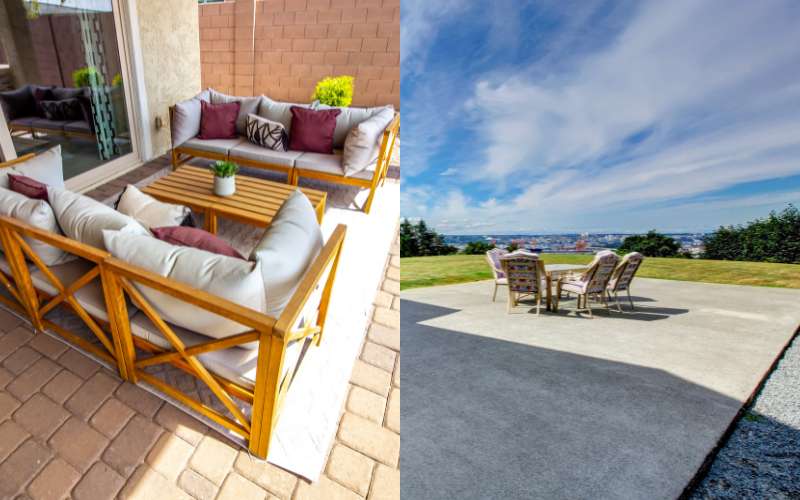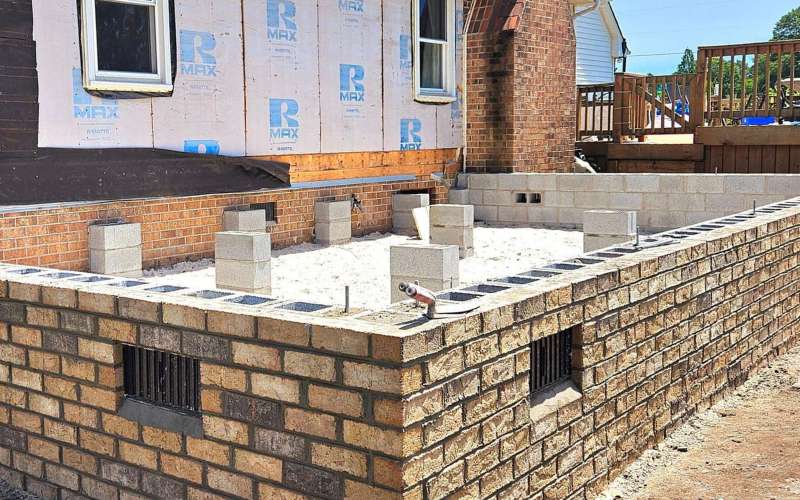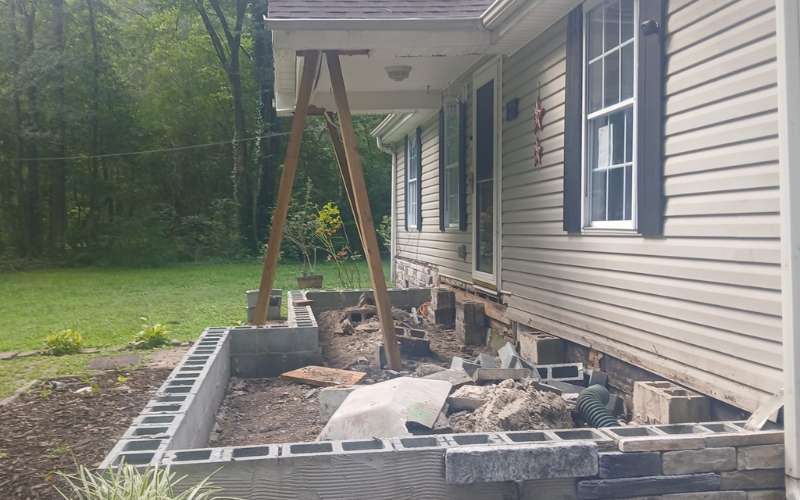When deciding on your patio, you may wonder, “Stone Paver vs. Concrete Slab: Which Is Right for Your Patio?” Both options have unique benefits that can suit different needs. Choosing between them can be challenging. We’ll explore their advantages, costs, and aesthetics to help you decide which material best fits your style and budget.
Choosing Between Stone Pavers and Concrete Slabs for Your Perfect Patio
When planning a patio, choosing the right material is essential for long-term satisfaction. This section will break down the pros and cons of stone pavers and concrete slabs to help you make an informed decision. Let’s explore their durability, aesthetics, installation process, and cost-effectiveness.
Durability and Longevity
- Stone Pavers: Stone pavers are known for their durability and can withstand heavy foot traffic and weather changes. They are made from natural stones, such as granite or limestone, which makes them resistant to cracking and chipping. Individual pavers can be replaced if damaged, extending the overall life of your patio.
- Concrete Slabs: Concrete slabs offer good durability but are more prone to cracking due to weather changes and soil shifts. However, with proper maintenance and sealing, a concrete slab patio can last many years. Unlike stone pavers, replacing a damaged section of concrete can be more challenging and costly.
Aesthetic Appeal and Design Options
- Stone Pavers: Stone pavers offer a wide variety of colors, shapes, and textures. This allows for greater customization and creativity in designing your patio. Whether you prefer a rustic, modern, or traditional look, stone pavers provide flexibility and visual appeal. The individual pieces create a unique, high-end finish that enhances any outdoor space.
- Concrete Slabs: Concrete slabs can be customized with stamping, staining, or painting to mimic the look of stone or other materials. While concrete offers fewer natural variations than stone pavers, it can still provide a clean, contemporary appearance. Decorative finishes add character but may require additional maintenance to keep the look fresh.
Installation Process and Time
- Stone Pavers: The installation process for stone pavers is more labor-intensive and requires careful preparation, including a base layer of gravel and sand. Although this process takes more time and effort, the result is a flexible surface less likely to shift over time. Properly installed pavers provide a stable, long-lasting patio surface.
- Concrete Slabs: Installing a concrete slab is generally faster and requires less labor than stone pavers. After pouring the concrete, it takes a few days to cure before it’s ready for use. While quicker to install, concrete slabs may need expansion joints to prevent cracking, which can affect the overall appearance.
Cost Considerations
- Stone Pavers: Stone pavers are generally more expensive than concrete slabs, primarily due to material costs and the labor-intensive installation process. However, their durability and low maintenance can make them a cost-effective choice in the long run. They are ideal for homeowners who value aesthetics and long-term benefits.
- Concrete Slabs: Concrete slabs are often the more affordable option upfront. The cost of materials and installation is lower compared to stone pavers. However, the potential need for repairs and maintenance, such as sealing or patching cracks, may increase the overall cost over time.
Maintenance Requirements
- Stone Pavers: Maintaining stone pavers is relatively simple. They require regular sweeping and occasional power washing to keep them looking new. Weeds may grow between the pavers, but this can be managed with weed killer or polymeric sand.
- Concrete Slabs: Concrete slabs need regular sealing to prevent staining and damage from moisture. Cracks may appear over time and require patching. The maintenance routine is essential to extend the life and appearance of a concrete slab patio.
Ready to Transform Your Patio?
Choosing between a stone paver and a concrete slab patio depends on your style, budget, and maintenance preferences. Both have unique benefits and can enhance your outdoor space. If you’re ready to take the next step, contact us today for a free consultation and start planning your perfect patio!



